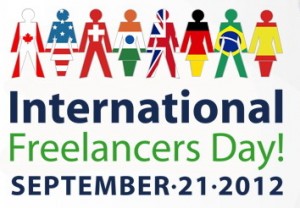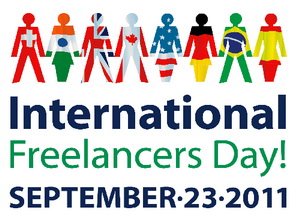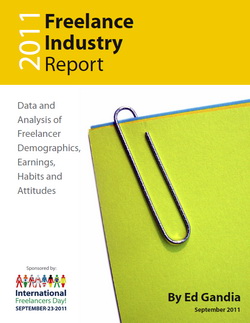Some people envision freelancing as an escape from some of the more unpleasant aspects of full-time work — difficult bosses, office politics, rigid schedules, daily commutes, and unrewarding work. The truth is: freelancing may not really be much of an escape.
Yes, you do get the flexibility to work when and where you want to. But you won’t always be doing work that you love. Often, you must act as your own accountant, marketing person, and IT guy. (Your computer will crash when your workload is the heaviest and the deadlines are the tightest.) Freelancing can quickly become like a never-ending job search as you keep your eye out for new opportunities and write proposals for potential new clients.
Unless you prepare yourself for the realities of freelancing, you may struggle with an unstable and unpredictable cash flow, unexpected expenses, and the challenges of doing unfulfilling work for many difficult bosses.
Ultimate Freelancer’s Guide Tackles Financial Angles
So before you ditch a relatively decent and stable full-time job, you might want to take a deeper look at some of the financial realities. One good place to start is “The Ultimate Freelancer’s Guide: Everything You Need to Know About Getting Jobs, Getting Paid, and Getting Ahead.” The guide was published by The Simple Dollar, a top personal finance blog.
The guide consolidates a lot of practical advice about some of the pain points and long-term challenges. For example:
- Income isn’t guaranteed.
- Not every hour you work is billable.
- Employers don’t pay for your benefits (including holidays and vacations).
- Financial due diligence is a must.
The guide notes that, “You need a head for business, especially when it comes to finances and expenses. It’s not just about taxes; you also have to learn about accounting, billing, licensing, and contracts. All of that extra work can be tough if you’re slammed during work hours with freelance projects.”
Useful Advice
In the section of the guide about “Business Structure and Registration,” the authors discuss the advantages of formally establishing a business if you’re planning to build a long-term freelance career: “A registered business can shield you from personal liability and provide tax advantages. Less tangible (but equally important), a registered business builds legitimacy, so your clients forget you’re working from home in your pajamas.”
In the guide, you’ll learn about the need to set aside sufficient funds for estimated quarterly taxes and retirement. Setting aside funds can be difficult because when you freelance: “It’s tough to predict when money will come in and easy to say, ‘I’ll save when it does.'” Many new freelancers forget about taxes and some report that they haven’t been able to pay their taxes at some point.
In order to stay in the black throughout the year, you need to book a variety of projects and should know where your work will be coming from for at least the next six months.
When pricing your work, don’t make the mistake of basing your rate on the salary you earned as a full-time employee. Your take-home pay didn’t take into account some of the new expenses you will face as freelancer, such as FICA taxes, health insurance, materials, and travel.
If you are offered a project that will take several months to complete, don’t be afraid to ask for an up-front deposit. Your client shouldn’t expect you to devote months of your time to an assignment, then wait an additional 30 to 50 days after the project is finished to get paid.
The Ultimate Freelancer’s Guide consolidates a wealth of other practical advice about
- managing your finances
- what to do if you’re not getting paid
- setting your freelance rate
- how to find great freelance jobs and submit proposals
- building your brand, portfolio, and professional network
Whether you choose to build a career as a freelancer or find yourself doing freelance work out of necessity, The Simple Dollar offers sound financial advice. Their tips and recommended resources can help you avoid some painful lessons that can wreak havoc on your bank account.








